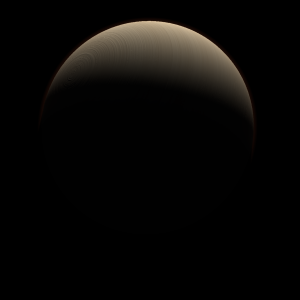|
|
Space Astro
|
Info for exoplanet "Dene Thega"
| Scientific (actual) data |
|---|
| Name | OGLE-2014-BLG-0221L b |
| Planet status | Confirmed |
| Planet mass | 4.35 |
| Semi major axis | 3.76 |
| Discovered | 2023 |
| Updated | 2024-07-17 |
| Publication | Published in a refereed paper |
| Detection type | Microlensing |
| Mass measurement type | Microlensing |
| Star name | OGLE-2014-BLG-0221 |
| Right ascension | 270.3° |
| Declination | -27.43° |
| Star distance | 4000 |
| Star mass | 0.69 |
| Star alternate names | MOA 2014-BLG-69, OGLE-2014-BLG-0284 |
| Wikipedia article | OGLE-2014-BLG-0221L b |
Back
| |
| Fictional info (?) |
|---|
| Suggested name | Dene Thega |
| Planet type | Large cold gas giant |
| It is the coldest planetary atmosphere in its solar system, with a minimum temperature of 28°K (-245°C), and has a complex, layered cloud structure with sulfur dioxide thought to make up the lowest clouds, and hydrogen chloride the uppermost layer of clouds.
As seen from OGLE-2014-BLG-0221, in a frame of reference that rotates with the orbital motion, it appears to rotate only once every two years.
It is radically different from Earth in other respects. |
| Atmosphere | Hydrogen chloride | 50% |
| Sulfur dioxide | 47% |
| Ammonium hydrosulfide (NH4SH) | 1.6% |
| Ozone | 0.0057% |
| 2H2O | 0.00077% |
| Ammonia | 2.8E-5% |
| Atmospheric pressure | 10 bar |
 |
| Moon | Carmipvi | Small almost round ice planetoid |
| Mungala Autohoe | Huge round rocky comet |
| Google search for Dene thega |
|
Website by Joachim Michaelis
|
|
|
|